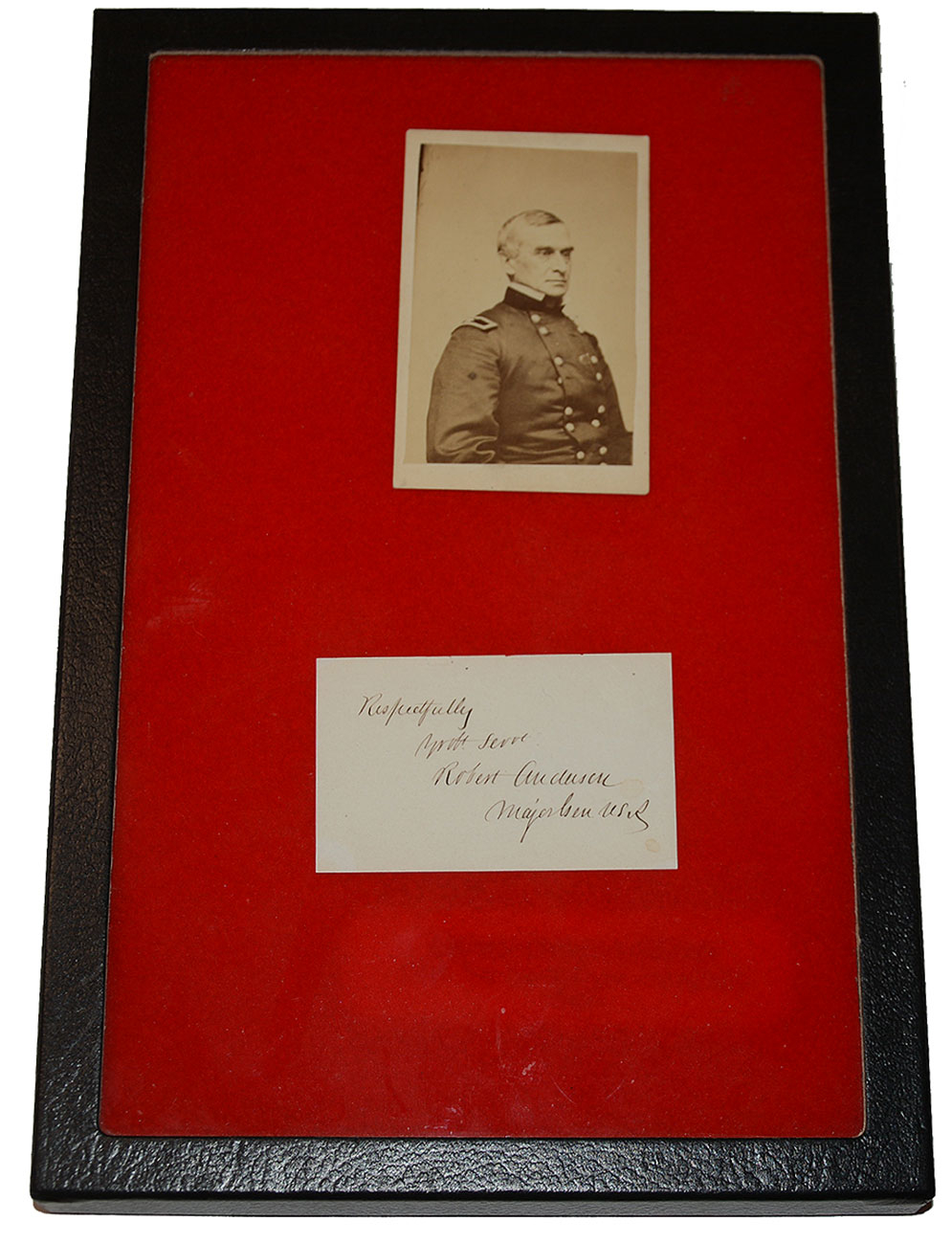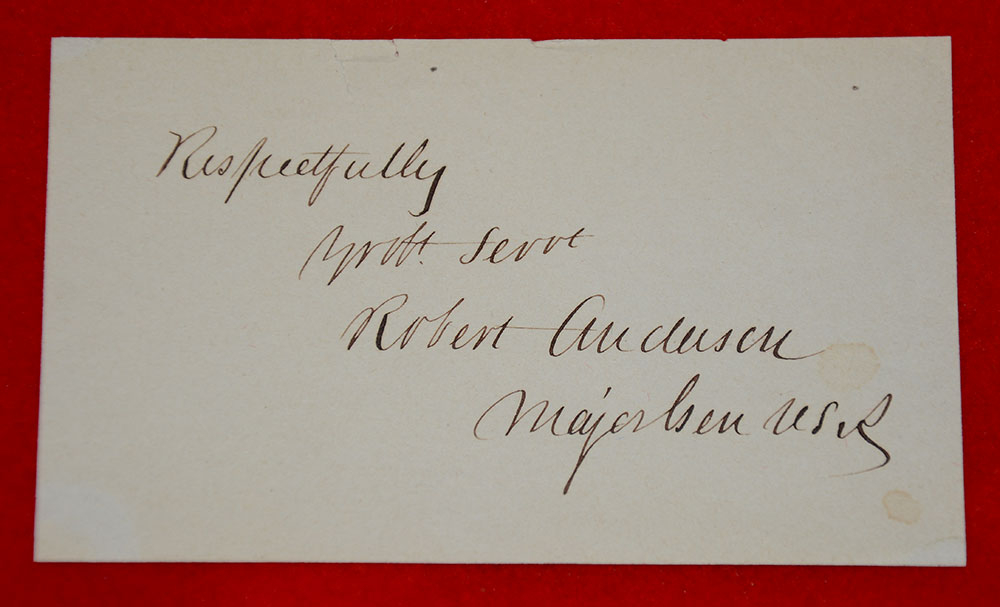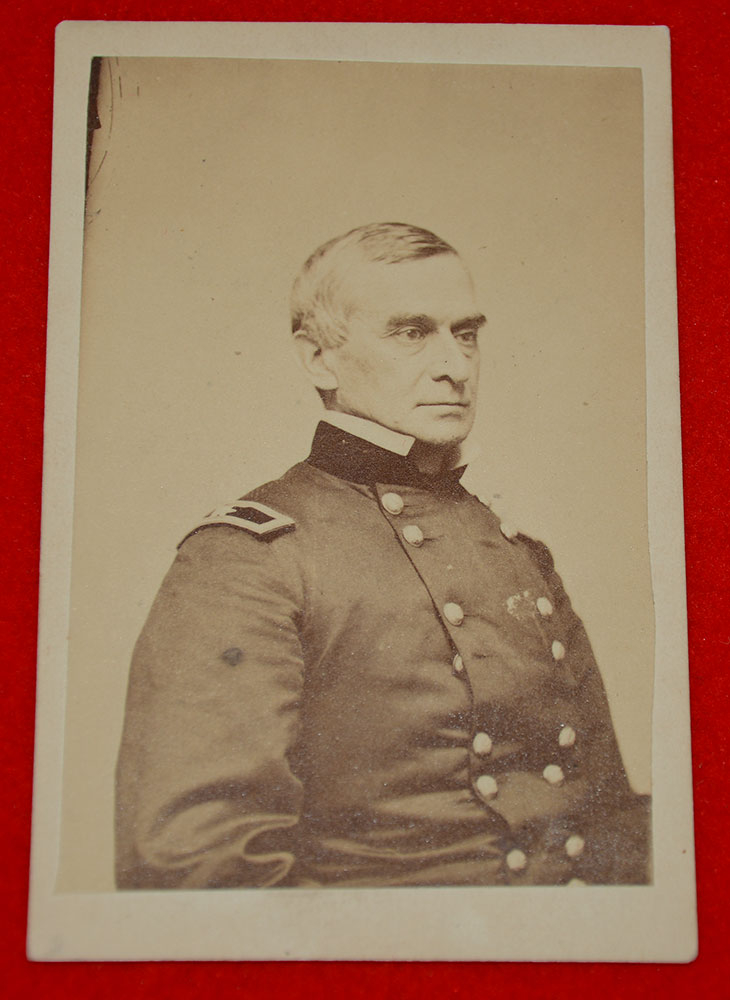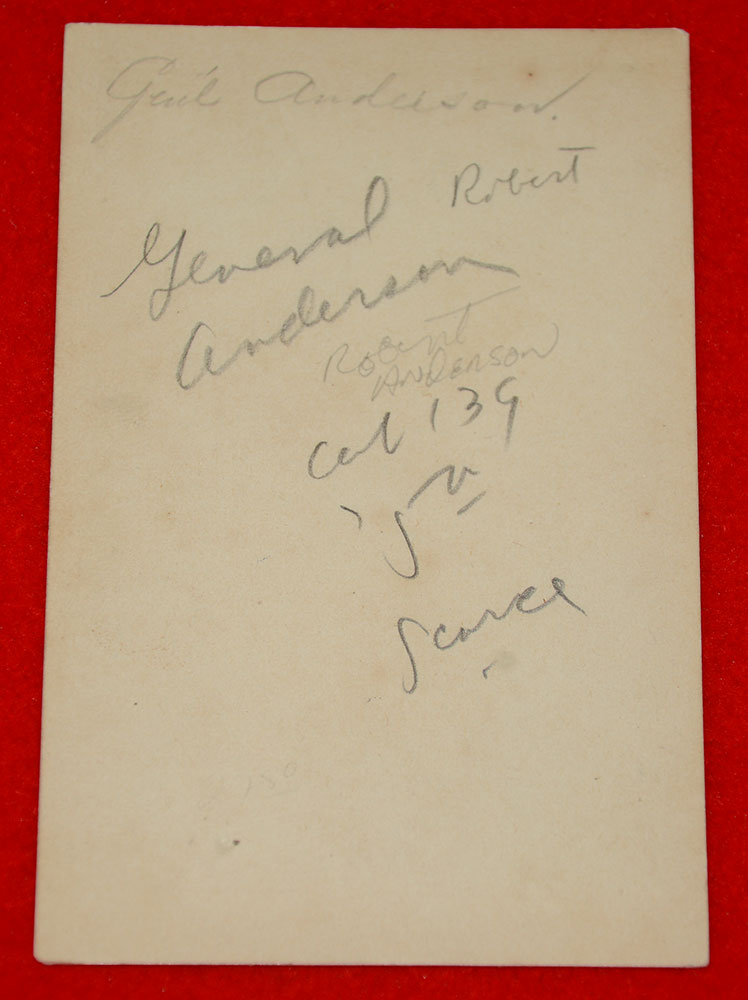site search
online catalog
CLIPPED SIGNATURE WITH CDV OF GEN. ROBERT ANDERSON, HERO OF FORT SUMTER

Hover to zoom




$375.00 SOLD
Quantity Available: None
Item Code: 2025-492
Housed in a Riker box measuring 8 ¼” x 12 ¼” is an undated clipped signature on a 3 ½” x 2” piece of paper. Handwritten in ink: “Respectfully / yr obt servt / Robert Anderson / Major Gen USA.” Accompanying the signature is a waist length CDV of Anderson in very fine, clean condition. No backmark; modern pencil ID on reverse.
Robert Anderson was born in Kentucky on June 14, 1805. He graduated from the U.S. Military Academy at West Point in 1825, receiving a commission in the 2nd U.S. Artillery. During the Black Hawk War of 1832, he served as a colonel of Illinois volunteers and had the distinction of mustering a young Abraham Lincoln in and out of military service. During the Second Seminole War in 1837, he was an assistant adjutant general on the staff of Winfield Scott and by 1839 he had published the manual Instruction for Field Artillery, Horse and Foot. Severely wounded at the Battle of Molino del Rey in September 1847 during the Mexican War, he received a brevet promotion to major.
In 1860 Anderson was dispatched to South Carolina to replace Charleston’s elderly garrison commander, Bvt. Col. John L. Gardner. The Buchanan administration believed that putting a Southerner in command of the forts there would be perceived as a diplomatic gesture of non-hostility. Although staunchly pro-Union, it was widely known that Anderson had no quarrel with the institution of slavery.
Throughout the crisis in Charleston Harbor during the winter and spring of 1861, Anderson acquitted himself with dignity and resolve. Moving his garrison to Fort Sumter was the best decision Anderson could make under the circumstances he faced. His refusal to surrender the fort to South Carolina secessionists caused them to open fire on April 12, 1861. After two days of bombardment Major Anderson surrendered the fort.
Immediately upon emerging from Fort Sumter, Anderson found himself a national hero. Less than one week later, an estimated 100,000 people gathered in Manhattan’s Union Square Park to cheer Anderson and salute the 33-star flag he had rescued from the fort after its surrender. The man and the flag then went on tour across the North, recruiting military volunteers and raising funds for the war effort rising to major general by brevet.
On April 14, 1865, Anderson and the now-legendary Fort Sumter Flag returned to Charleston for a ceremony to celebrate the war’s end and the reunification of the nation. Precisely four years after it was lowered, the banner was raised over the now ruined fort.
In 1869, Anderson discussed the future of the U.S. Army with the "Father of the United States Military Academy," Brevet Major General Sylvanus Thayer. An outcome of that visit was establishment of the Military Academy's Association of Graduates.
Anderson died in Nice, France, seeking a cure for his ailments. He was later interred at West Point Cemetery. [ld][ph:L]
~~~~~~~~~~~~~~~~~~~~~~~~~~~~~~~~~~~
THIS ITEM, AS WITH ALL OTHER ITEMS AVAILABLE ON OUR WEB SITE,
MAY BE PURCHASED THROUGH OUR LAYAWAY PROGRAM.
CLICK HERE FOR OUR POLICIES AND TERMS.
THANK YOU!
Inquire About CLIPPED SIGNATURE WITH CDV OF GEN. ROBERT ANDERSON, HERO OF FORT SUMTER
Most Popular
Historical Firearms Stolen From The National Civil War Museum In Harrisburg, Pa »
Theft From Gravesite Of Gen. John Reynolds »
Selection Of Unframed Prints By Don Troiani »
Fine Condition Brass Infantry Bugle Insignia »
British Imported, Confederate Used Bayonet »
Scarce New Model 1865 Sharps Still In Percussion Near Factory New »
featured item
CIVIL WAR COMMODORE’S UNDRESS FROCK COAT OF SILAS H. STRINGHAM, USN: LEADER OF THE FIRST COMBINED OPERATION OF THE UNION NAVY AND ARMY IN THE CIVIL WAR; VICTOR OF THE BATTLE OF HATTERAS INLET BATTERIES
Fought on Aug. 28-29, 1861, little more than a month after the Union defeat at Bull Run, the capture of Forts Hatteras and Clark on the outer banks helped restrict Confederate blockade running, enabled further operations on the North Carolina coast,… (1179-504). Learn More »


